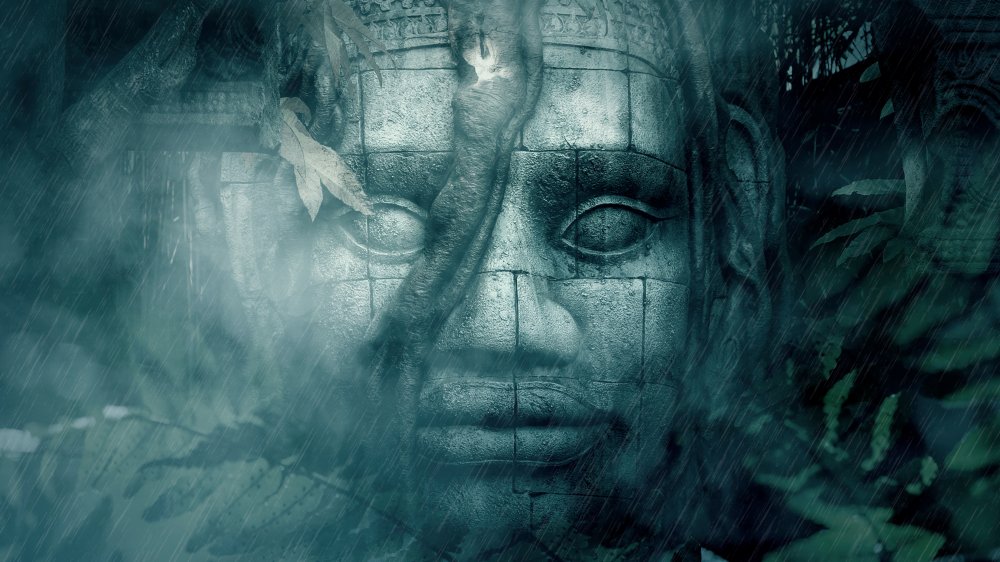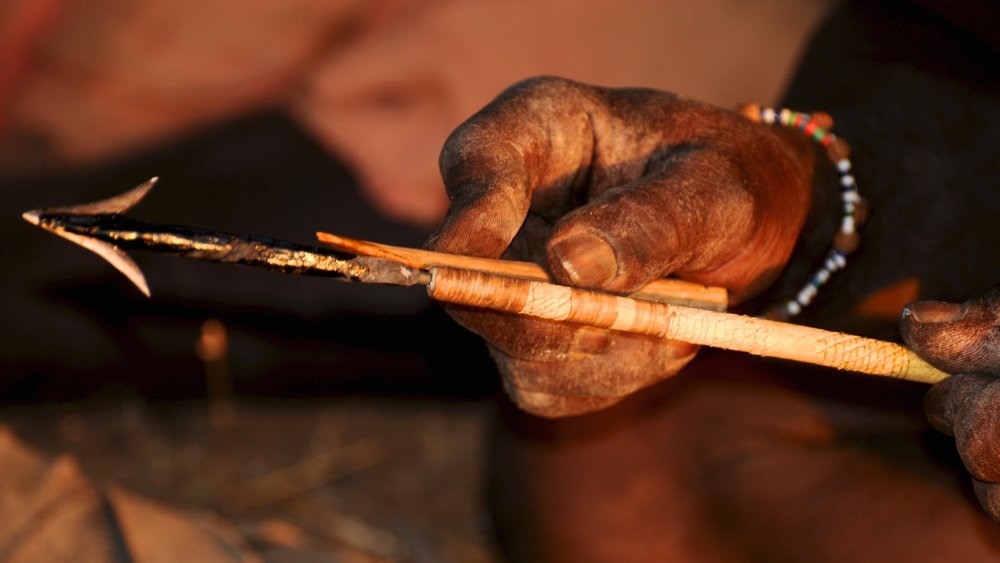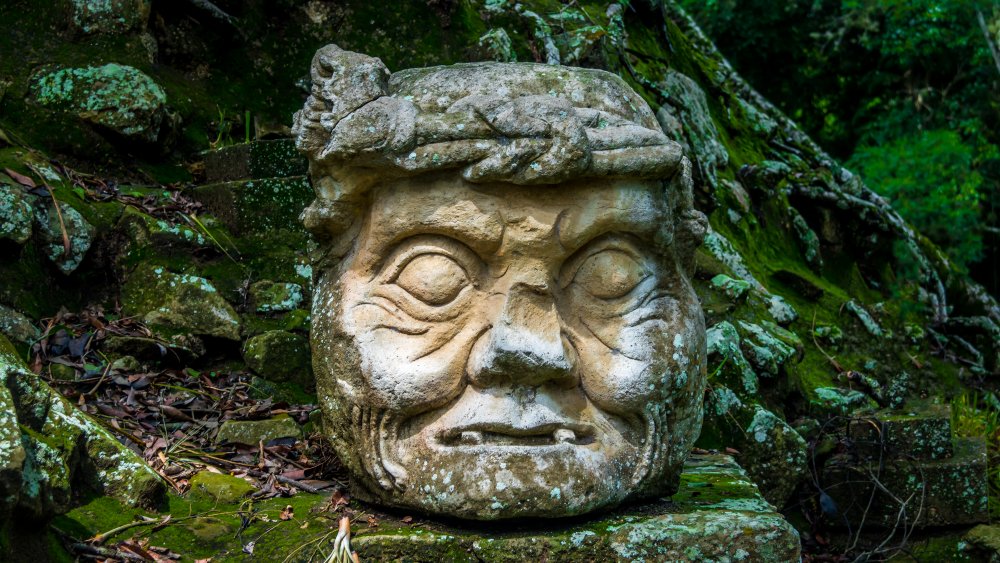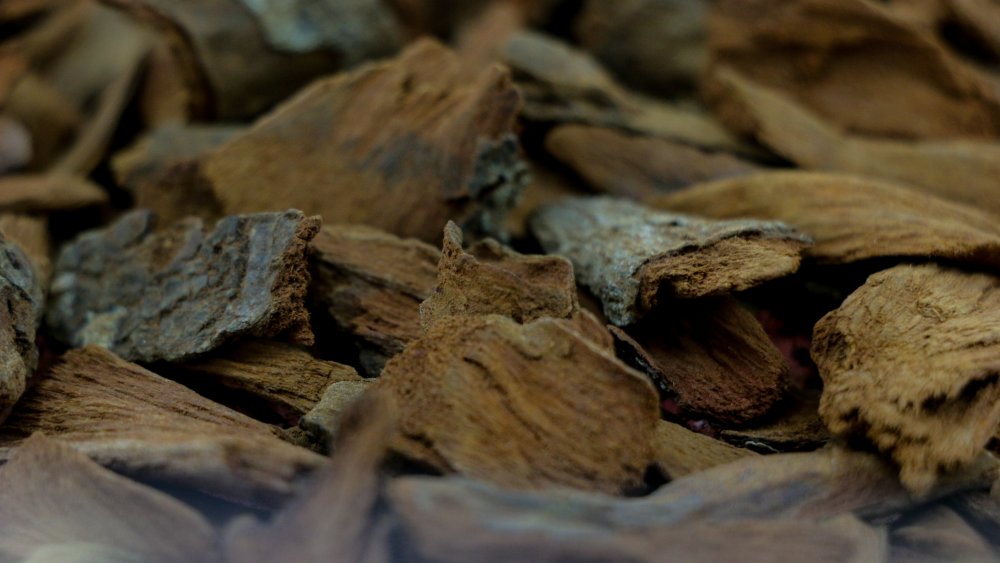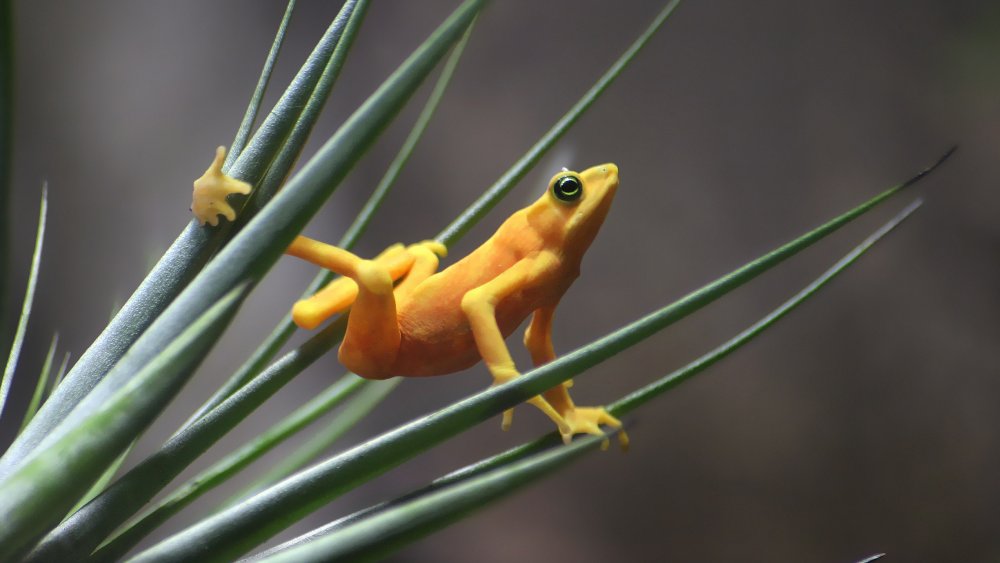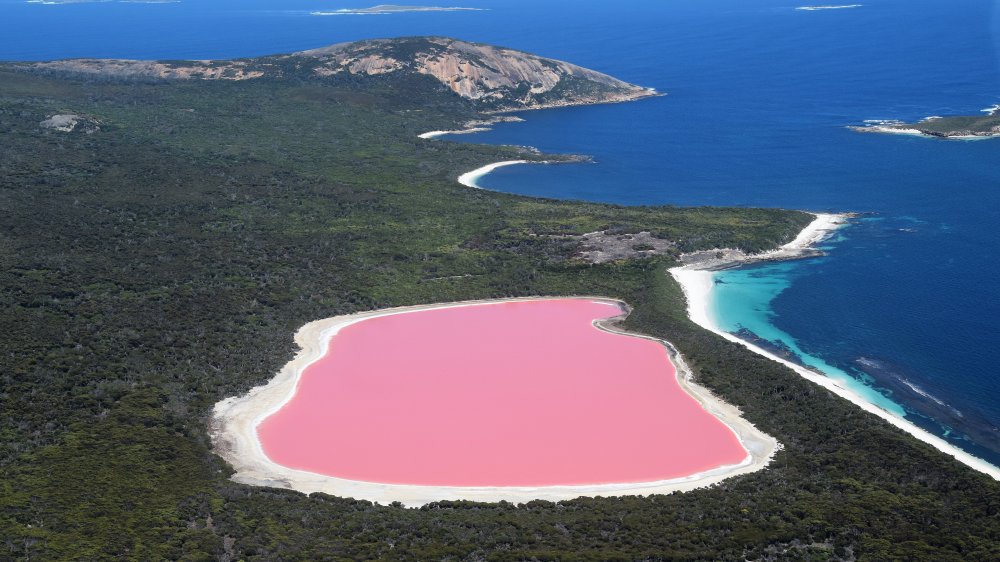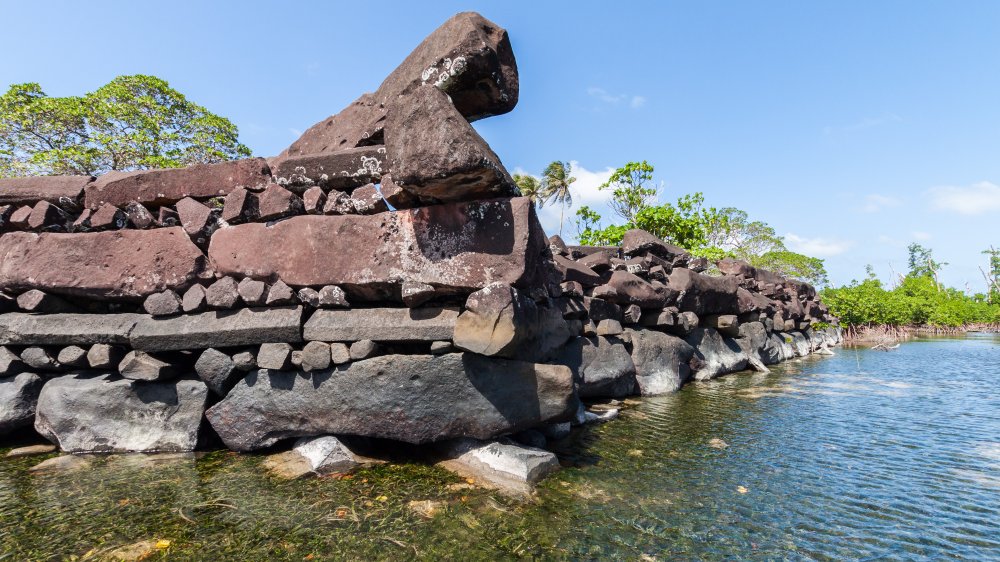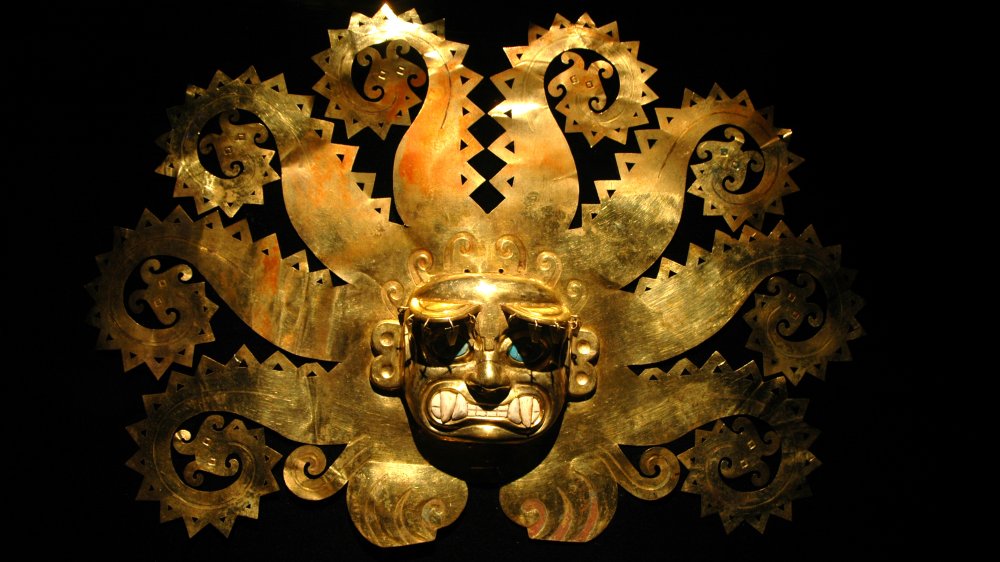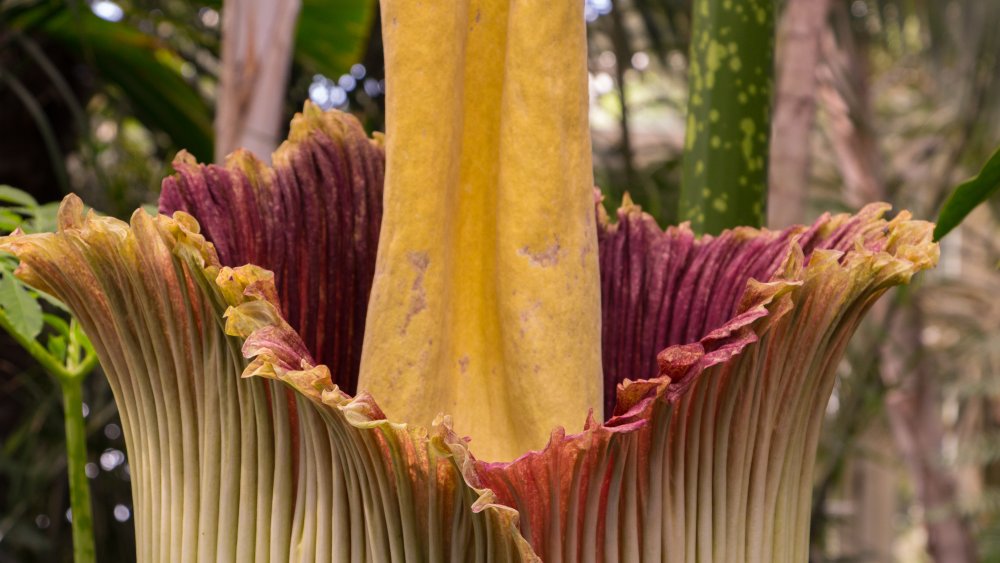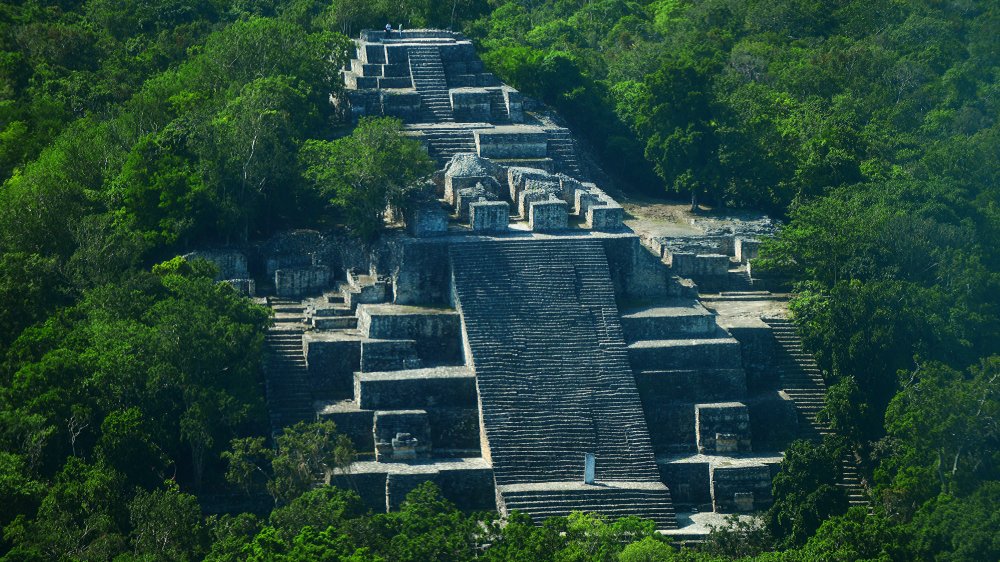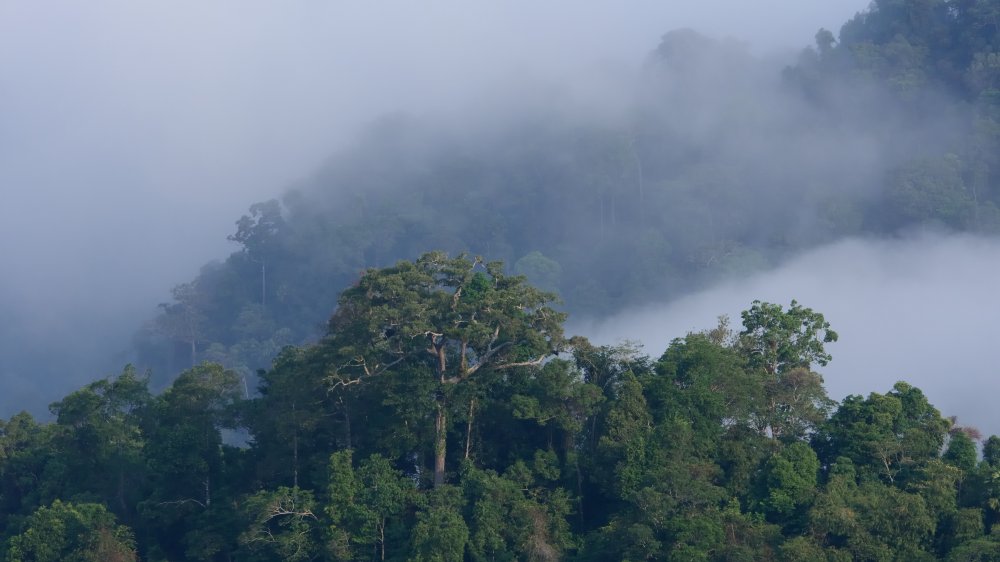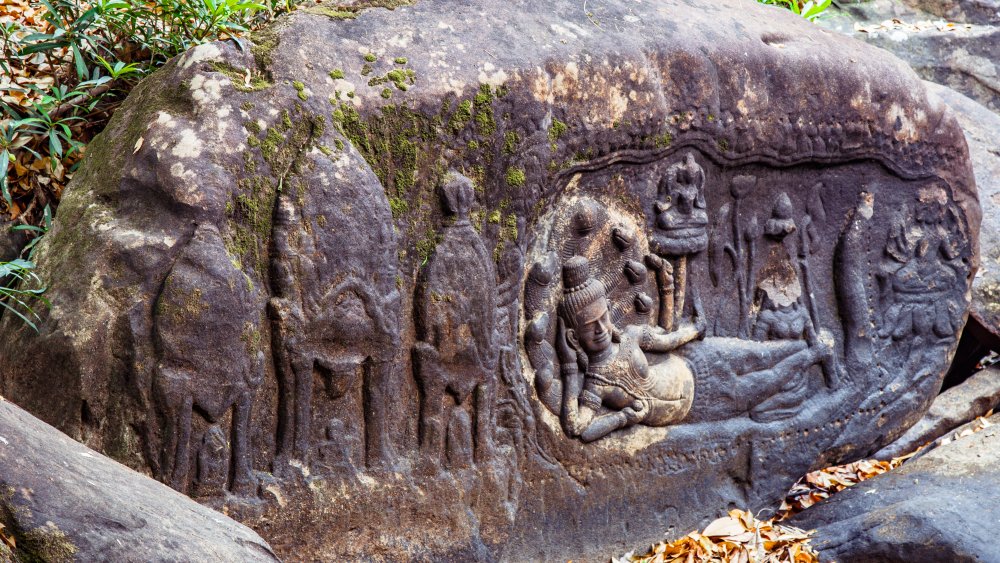Fascinating Discoveries Made In The Jungle
There's something deeply mysterious about the jungle: sure, we've explored a lot of the earth's surface, but there's always hope that something indescribably awesome is lurking out there, just waiting for us to stumble across it. And no, we're not talking about some sort of alien landing zone or storage facility for some crystal skulls — that's just silly.
We're talking about animals with bizarre skills beyond what most people can manage. We're talking about miracle cures, lost cities, mysterious structures, and... yes, we're even going to go there: Nazi hideouts.
Archaeologists and explorers have already found tons of super cool stuff in the jungle, and seeing it for the first time? That had to be a case of not believing your eyes. Heck, some of this stuff is still hard to believe — but they're all very real, often mind-bending, sometimes logic-defying discoveries made in the depths of our big, blue marble's jungles.
The plant that can kill you... or cure you
When Spanish conquistadors started exploring (i.e., conquering) South America, they found they were up against something terrifying: poison arrows. According to MR Lee, emeritus professor of Clinical Pharmacology and Therapeutics at the University of Edinburgh, explorers who returned to Europe in the 16th century told of arrows that first paralyzed their target, then killed them.
It took around 200 years before the European invaders figured out the native peoples were preparing a plant paste and applying it to their arrows, but even then, it wasn't until the 1800s that European explorers were able to identify the plant. For a while, it was simply that: a poison. But if it was just a poison, it wouldn't be that fascinating of a discovery, would it?
Now, fast forward to the 20th century and an explorer named Richard C. Gill. In 1938, he and his neurologist started looking to the rainforest for a cure for a neurological condition he'd developed after a horseback riding incident (via the New York Botanical Garden). Among the secrets indigenous peoples shared with him were the different recipes they used for preparing curare poison, which two Canadian anesthetists realized could be used for a different reason. At the time — 1942 — general anesthesia was still being used for invasive surgeries. Injecting the proper preparation of curare served as a super localized muscle relaxant, which changed the way surgeries were performed. It took 400 years, but curare went from poison to lifesaver.
Even Nazis need a secret clubhouse
In 2015, archaeologists were taking a good, long look at three decrepit buildings in the jungles of Argentina. Why? Because among the artifacts found there was a porcelain plate that bore the markings "Made in Germany," and five German coins. Well, that's not the entire story: they were Nazi-era German coins.
The expedition's team leader, Daniel Schávelzon, said (via Time) that the little cluster of buildings were just one of many sites planned during World War II, because even the most dedicated Nazi needed a backup plan. "Apparently," Schávelzon said, "halfway through World War II, the Nazis had a secret project of building shelters for top leaders in the event of defeat — inaccessible sites, in the middle of deserts, in the mountains, on a cliff, or in the middle of the jungle like this."
The buildings were definitely made with security in mind, and according to the BBC, some of the walls were up to nine feet thick. So, were they ever used? They say that it's pretty doubtful, for a very questionable reason: Argentina's then-president, Juan Perón, had something of an open-door policy when it came to letting Nazis resettle in the country. If even Adolf Eichmann, the guy who engineered the Holocaust, was allowed to live happily and freely in Buenos Aires, archaeologists note, then the chances of other leaders opting for jungle life was pretty slim.
The Lost City of the Monkey God
For years, archaeologists had been hearing rumors of a city in the jungle of Honduras. It was sometimes called La Ciudad Blanca — the White City — and sometimes, it was called the Lost City of the Monkey God. In 2015, the city stopped being myth and became very real.
The city first crops up in legend as a place where indigenous people went to escape the relentless conquest — and slaughter — brought by the Spanish conquistadors. Early 20th century expeditions only brought back rumors, and it wasn't until 2010 that a new technology called lidar (light detection and ranging) came on the scene. Scanning revealed an extensive city hidden in the jungle, and in 2015, National Geographic says archaeologists finally hacked their way through the trees to find the long-abandoned ancient city.
What they found was nothing short of incredible: perfectly preserved and untouched stone structures, pyramids, and carvings, vessels and jars, thrones and tables. Archaeological investigation has, of course, been pretty slow, but the site's yielded some other things, too. Conservation International found the untouched paradise was home to a handful of endangered plants, birds, insects, and reptiles, and described it as "a refuge" for threatened species. Oh — and Douglas Preston, who'd been involved with that first expedition, told The Verge that they'd found something else: a flesh-eating disease that first rots off a person's nose and lips, and yes, the explorers all came home with it, so maybe leave that all to the professionals.
That time South Americans cured a disease they didn't have until Europeans showed up
Hearing about malaria might conjure images of mosquito-filled jungles, but here's the thing: the general consensus is (via Medium) that there was no malaria in South America until Europeans showed up, and brought it with them. It was the gift that kept on giving, and it spread faster than Europeans themselves. By the time explorers made it to the Andes, malaria was already there — and in an awesome twist, so was the cure.
That cure was the bark of the Cinchona tree (pictured), which native people had long used to treat fever. It only made sense that they used it to treat this new disease, too, and it worked. It wasn't until much later — 1820, to be precise — that French scientists figured out how to extract the potent ingredient from the bark, and that was quinine.
The popular tale that it was a Spanish noblewoman who actually discovered it could be used to treat malaria has been widely discounted now, says the BBC, but one thing that's not discounted is that it was a huge deal. Throughout the 19th century, it saved so many British lives that it was considered one of the "tools of imperialism" that allowed the British Empire to colonize malaria-heavy areas like India. It wasn't replaced as a malaria treatment until the 1970s, and by then, it had saved an unthinkable number of lives... and had a global impact.
The frog that communicates via semaphore
Finding a frog in the jungle doesn't sound that out of the ordinary, but the Panamanian golden frog is pretty darn cool. According to The Guardian, the world was first introduced to the little golden frog in a documentary that was filmed in 2006. The frog was not only highly poisonous, but it had developed a neat way of communicating: via semaphore.
Researchers filming the frogs for the BBC noted that the areas where they were living — in mountains streams, deep within the jungle — was very loud. The usual croaks and ribbits couldn't be heard by other frogs, so these little guys developed an extensive system of waving their arms, twitching their legs, and stamping their feet in order to get their messages across.
Neat, right? Unfortunately, the Smithsonian says that they're critically endangered. Even as the BBC was filming, the entire area's frog populations were being destroyed by the spread of a chytrid fungus. And here's where there's a "fortunately": researchers were able to save a handful of the little waving frogs, hoping to not only find a cure for the disease that was driving them to extinction, but to increase their numbers and repopulate the wild.
The lake that looks like it's filled with strawberry milkshake
Picture the scene: it's 1802, and Mathew Flinders, a British navigator and cartographer on the HMS Investigator, disembarks on what's now known as Middle Island. They're off the south coast of Australia in the Recherche Archipelago, and it's exploring time. He shoulders his way through the dense jungle, makes his way to the top of the highest peak, looks at the landscape around him, and says (we like to think), "Huh."
What he saw was a bright pink lake, and while he undoubtedly wasn't familiar with strawberry milkshakes, that's the closest color comparison you might comfortably make. He wrote that it was "of rose color," and that's legit, too. He and his crew made their way to the lake, where they found it was also really salty — they were able to restock their entire ship with just the salt that had crystallized along the shores. Interesting Engineering says it was Flinders who named the lake Hillier, a tribute to a crew member who had died while they were docked at the island.
And it turns out that super-salinity has something to do with the lake's color. Since the water is so salty, most of the microscopic life that can survive there are bacteria and archaea (which Britannica helpfully tells us is a kind of single-celled organism distinct from bacteria). Those organisms have a particular pigment in their cell membranes that's credited with making the water look pink. Neat, huh?
The city that inspired a lifetime of nightmares
The city of Nan Madol is nothing short of incredible. Atlas Obscura says it's Nan Madol that inspired HP Lovecraft's vision of R'lyeh, and it's no wonder: the Smithsonian calls it an "engineering marvel," and the only thing that's left of the Saudeleur, a people who were equally religious and cruel, who left behind a city of stone that's still thought to be the home of ghosts.
Creepy, sure, and in 2016, archaeologists discovered something unexpected within the ruins: the key to unlocking the mystery behind how mankind evolved from simple societies to more complex ones.
Science Daily reported that uranium series dating allowed researchers to pinpoint the date of the construction of an early chief's tomb to between 1180 and 1200. And the scale of the tomb is important too — historians say that because they've discovered what's essentially a recent evolution from a simple society to a complex one where one chieftain ruled over a series of islands and tribes, they still have access to something else: oral history. And that? That gives archaeologists hope that they might pinpoint the event that caused the Nan Madol society to reorganize itself into a society ruled by a chieftain who held a shocking amount of power and, in doing so, it might go a long way in helping us to understand just how societies have evolved.
The lost Inca gold
The story of the Inca gold starts way back in the 16th century, when Spanish explorer and all-around bad guy Francisco Pizarro demanded a ransom: if the Inca would bring him a room full of gold, he'd release king Atahualpa. Fortunately for Atahualpa, they started collecting the ransom. Unfortunately for Atahualpa, Pizarro was kind of an impatient jerk, and had him executed anyway.
And here, says National Geographic, is where the story gets fuzzy. It was said that ransom was stowed in a secret cave somewhere... well, just somewhere. But we're talking about discoveries that were actually made, critical readers are thinking. Well, there's evidence that suggests it's been found a few times.
The first was around 50 years later, when a Spaniard named Valverde came into some money: he claimed that the family of his Incan wife had shown him where the treasure was, and he left directions on how to find it. The guide and the map sort of disappeared until the 1850s, but it wasn't until 1886 that a treasure hunter named Barth Blake followed up on it, and reported that he'd found the treasure. He described some incredible things: life-sized human, bird, and animal figures made from gold and jewels, gold vases full of emeralds, and "the most beautiful goldsmith works you are not able to imagine." Blake took what little he could carry and left, planning on returning. Only, he disappeared on his way back to New York, and attempts to retrace his steps have failed.
The corpse flower
Shakespeare may have gone on about how sweet a rose smells, but not all flowers smell nice in the least. Just take the flower discovered in 1878, deep in the Sumatran rainforests. It's called the corpse flower, and that's because it has a very distinct — and disgusting — aroma. Those who witness the flower's rare bloom can confirm that it does, indeed, smell like a rotting corpse, and Mental Floss says there's a good reason for it: it's attracting dung and carrion beetles, who usually feed on dead flesh. Why? Pollination.
That's not the only cool thing about corpse flowers. They're massive, growing up to 12 feet tall in the wild. And that's where another bit of trivia comes in — they're not actually a single flower. A corpse flower is more like a plant, with a single central spike that's surrounded by rings of male and female flowers — hence the need for pollination.
And if you want to see one bloom, you'll have to be quick about it. They don't have an annual cycle, and it might be decades between blooms for any particular flower. Once they open, they'll only stay that way for between 24 and 36 hours... which is probably fortunate for nearby creatures with a sense of smell. But here's where we add a sad footnote: the destruction of the corpse flower's rainforest habitat has left it threatened.
Tens of thousands of Mayan structures
In the grand scheme of things, the Maya weren't around that long ago — around 1,500 years ago, says the BBC. But there's a shocking amount that we just don't know about them, and a 2018 discovery showed just how much we have yet to learn.
First, the how: lidar. Lidar — or "light detection and ranging" — is a technology that essentially peels back the layers of jungle by bouncing laser light off the ground, and returning wavelengths are measured and interpreted. Researchers turned lidar onto the jungles of Guatemala, and by the time they were done, they had discovered and mapped around 60,000 previous unknown Mayan ruins and no, that's not a typo. Archaeologists say that it'll take the next century to really go through all the data lidar uncovered, and noted that it's essentially 3,000 years of Mayan history condensed into a topographical map.
Even at a glance, they've learned some incredible things: areas of the jungle previously thought uninhabitable were, in fact, occupied, and the Maya spent more time and resources building defensive structures than we've long believed. Population numbers, too, have skyrocketed, with estimates suggesting that at the height of the civilization's power, it was home to between 10 and 15 million people. Also found? A seven-story tall pyramid, and if we can lose that, we can lose just about anything.
Watch your step... and don't fall in
Andres Ruzo first heard the stories from his Peruvian grandfather. There was a river, it was said, deep in the jungle that was so hot that it boiled. It followed, too, that anything that fell into it would be boiled alive. Scary!
Fast forward to when Ruzo became a geophysicist, and needless to say, a boiling river is totally his thing. According to National Geographic, Ruzo decided to try to figure out whether or not such a thing was possible — not only did he find out that yes, it's totally possible, but he found the river, too.
The river is 5.5 miles long, but it's only super-hot for around 3.8 miles... and yes, small animals that fall in are absolutely boiled alive. Further research revealed that it's a completely natural, geothermal phenomenon that's super deadly — and that local tribes have known about for a long time. Their ancient beliefs say that the river has huge spiritual power, and that the vapor coming off the boiling river carries the prayers of all living things to the Creator. And that's a pretty beautiful idea... just whatever you do, don't slip.
The ancient template for one of the world's most incredible sites
Everyone's familiar with Angkor Wat, the place that National Geographic calls the most famous of Cambodia's ancient temple complexes. We're not going to talk about that, though... not precisely. This a different complex just down the road that was even more illusive.
Archaeologists knew about this ancient complex for almost a hundred years, but it wasn't really discovered until 2012. That, says the Smithsonian, is when researchers confirmed the existence of a sprawling group of temples, palaces, and other buildings, high up on the 1,300-foot plateau called Phnom Kulen, and it's also when they had the technology to really appreciate just how huge the settlement was. It's only about 25 miles away from Angkor, but this newly discovered complex predates Angkor by about three centuries.
Think of it as sort of a technologically advanced blueprint: there's the same sort of imagery, buildings, and even an impressively advanced water supply that was first partially uncovered in 1936. That's when a French archaeologist mapped the ruins of 17 temples, but at the time, Angkor Wat was, well, it was just easier to get to. Phnom Kulen was largely ignored — except by the Khmer Rouge, who occupied the plateau until 1998, says the Smithsonian. Then finally — more than a decade later — lidar confirmed what the French team had started to uncover almost a century prior: they'd found the 9th-century fortress of the king Jayavarman II, the city that would serve as a template for one of Asia's most iconic temple complexes.
